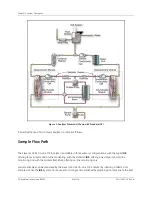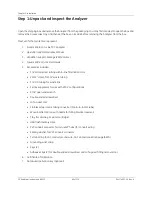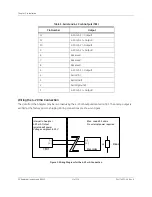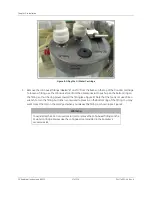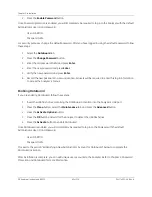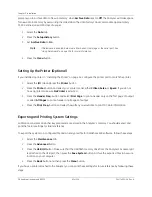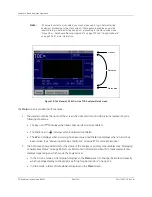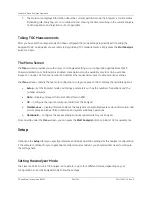
GE Analytical Instruments ©2010
54 of 226
DLM 74001-04 Rev. A
Chapter 3: Installation
Installing the Printer
The Analyzer has a 25-pin parallel (Centronics) printer port for connecting an optional printer. The printer must
be IBM compatible or Epson FX 850 compatible. GE Analytical Instruments sells Epson, Seiko, and Citizen printers
for use with the Analyzer.
To install the printer, follow these steps:
1. Connect the printer’s power converter to a grounded power source and plug the cable in to the back of
the printer.
2. Connect the printer cable to the port labeled
Printer
on the Analyzer and secure with the captive
screws.
3. Connect the other end of the printer cable to the printer and snap the clips into place.
4. Consult the instructions that come with the printer for additional setup help. Load the paper, and make
sure the printer is ready to print (depending on the printer model, press
SEL
or
Online
so that the green
light is illuminated).
Installing the USB Connection
The USB port is solely intended to provide data transfer to a USB flash memory drive. The flash memory drive
can then be used with your computer’s USB port to transfer exported data for import into a spreadsheet or
database program. The Analyzer cannot be directly connected to a computer via the USB port.
Due to significant variance among USB devices, not all USB flash memory devices are compatible with the
Analyzer.
To attach the USB flash memory drive, simply slide it into the USB port on the Analyzer (see Figure 6 on page 53).
Note that the drive must be oriented properly to slide in.
Installing the Serial Connection
The serial connection is optional and provides an additional means of capturing data from the Analyzer. Serial
cables are available at many computer and office supply retail stores. To install the serial connection:
5. Connect the male end of the serial cable to the port on the Analyzer labeled
Computer RS232
(see
Figure 6 on page 53) and tighten the captive screws.
6. Connect the other end (female end) of the cable to the serial port on your PC, again connecting the
captive screws.
Note:
For long distance connections (up to 1,000 feet or 305 meters), GE Analytical
Instruments recommends use of either a RS-232 current loop converter or a RS-422
converter. You can also use an Ethernet connection.
Summary of Contents for Sievers 500 RL
Page 8: ...GE Analytical Instruments 2010 8 of 226 DLM 74001 04 Rev A ...
Page 10: ...GE Analytical Instruments 2010 10 of 226 DLM 74001 04 Rev A ...
Page 36: ...GE Analytical Instruments 2010 36 of 220 DLM 74001 04 Rev A ...
Page 66: ...GE Analytical Instruments 2010 66 of 226 DLM 74001 04 Rev A Chapter 3 Installation ...
Page 152: ...GE Analytical Instruments 2010 152 of 226 DLM 74001 04 Rev A Chapter 7 Maintenance ...
Page 170: ...GE Analytical Instruments 2010 170 of 226 DLM 74001 04 Rev A Chapter 8 Troubleshooting ...
Page 178: ...Appendix A GE Analytical Instruments 2010 178 of 186 DLM 74001 04 Rev A ...
Page 185: ...Notes GE Analytical Instruments 2010 185 of 186 DLM 74001 04 Rev A 186 ...
Page 186: ...Notes GE Analytical Instruments 2010 186 of 186 DLM 74001 04 Rev A 186 ...



